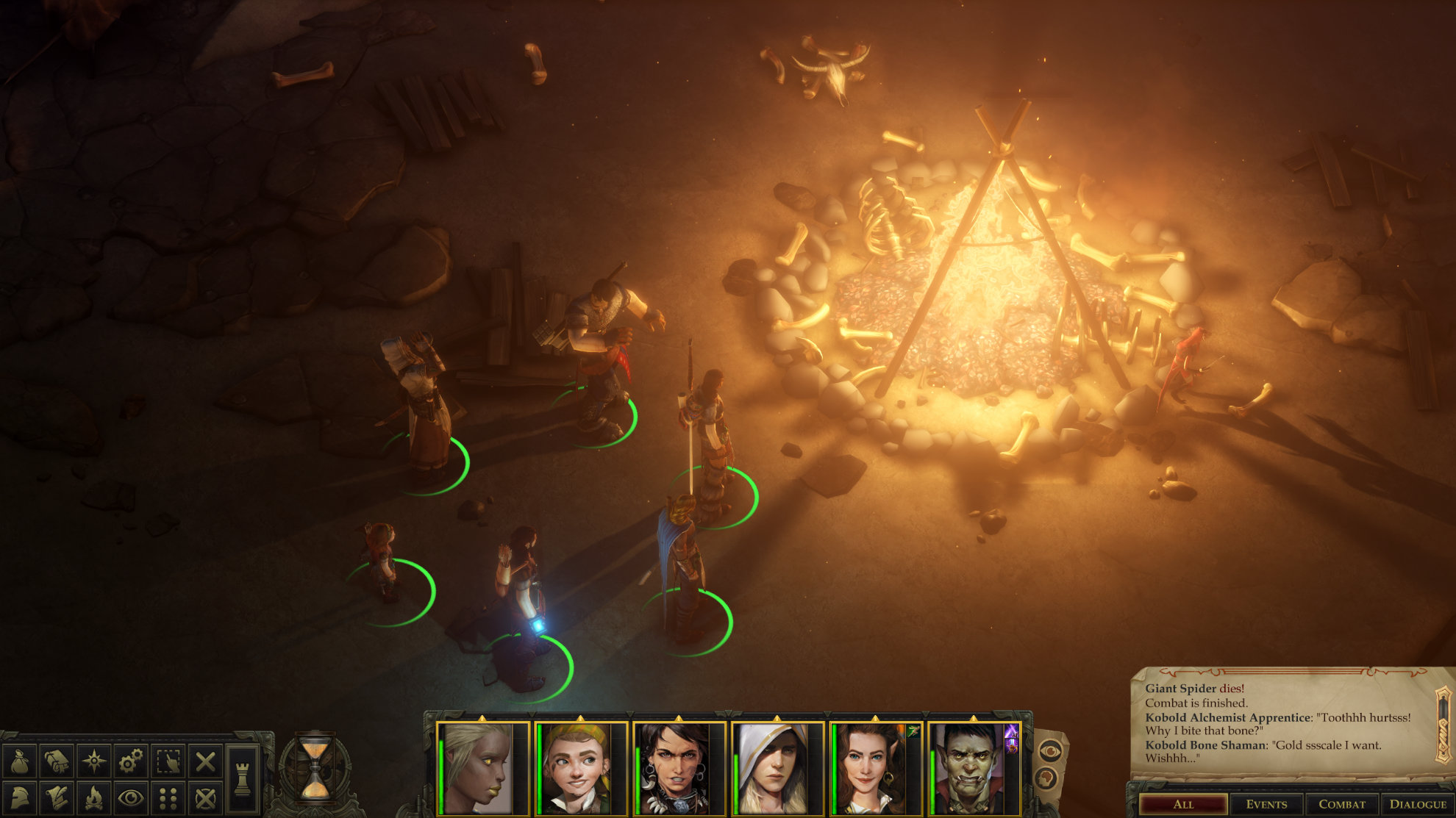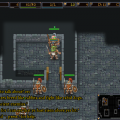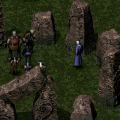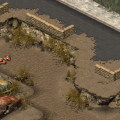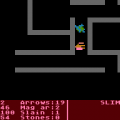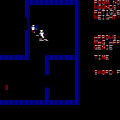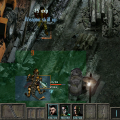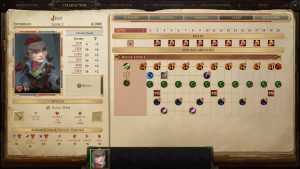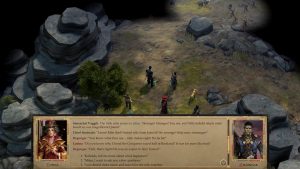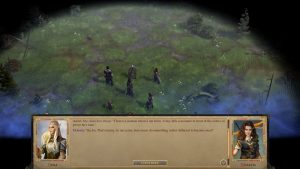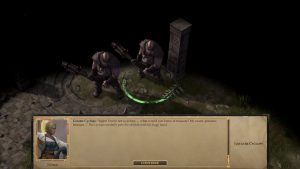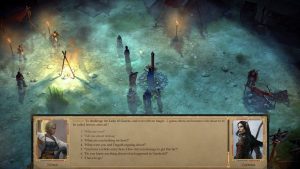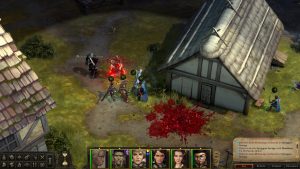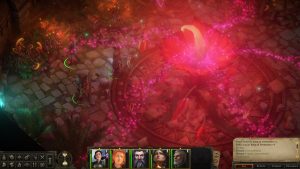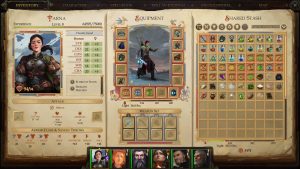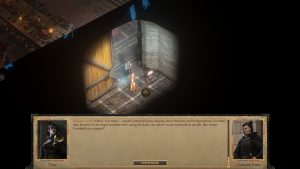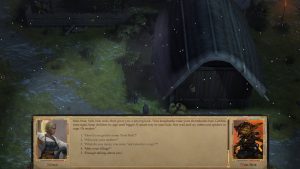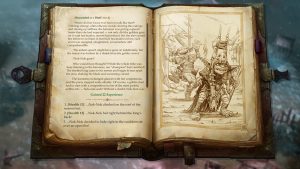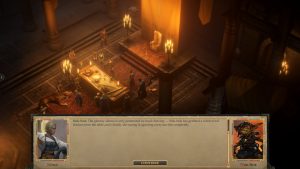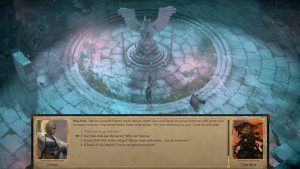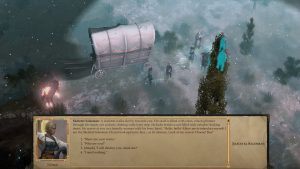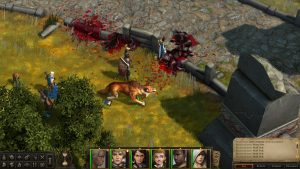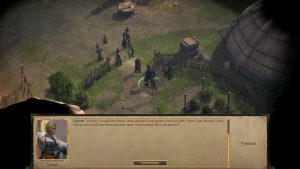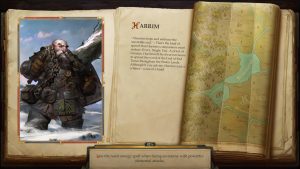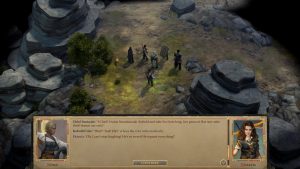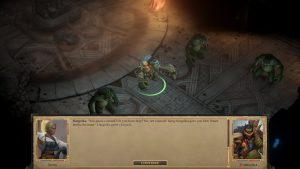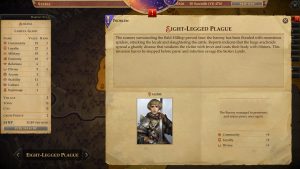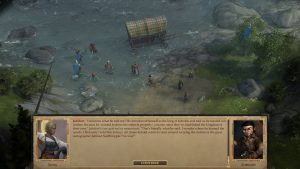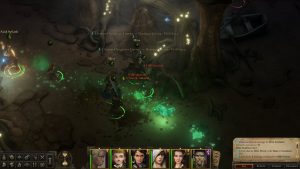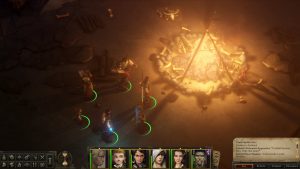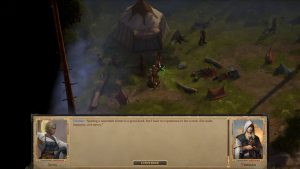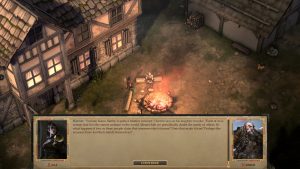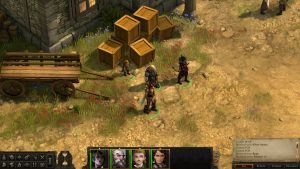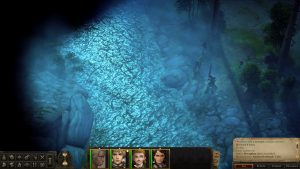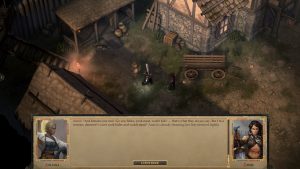- Pathfinder: Kingmaker
- Pathfinder: Wrath of the Righteous
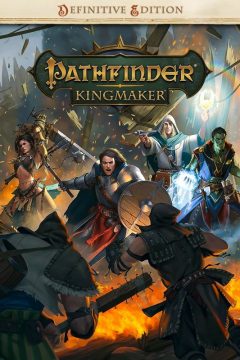
In 2008, the forth edition of Dungeons & Dragons was released, and hated with a fiery passion by the player base. It was so hated that a publishing group called Paizo was able to release a modded version of 3.5 and made that a best seller, giving them a foothold in the tabletop market. That fork release became Pathfinder, which created its own lore and setting to make itself more distinct from D&D.
Naturally, video games would follow, but the first attempt, the MMO Pathfinder Online, apparently never left early enrollment before being closed down in 2021. Content was made for it up until its final days, but it seemed to have received little of a fanbase. There was also an adaptation of the card game from Obsidian called Pathfinder Adventures, though that hasn’t seemed to have caught on too much. Same goes for the defunct mobile card game Pathfinder Duels. Thankfully, a Russian team by the name of Owlcat Games managed to get the franchise a foothold with some CRPGs funded via crowdfunding.
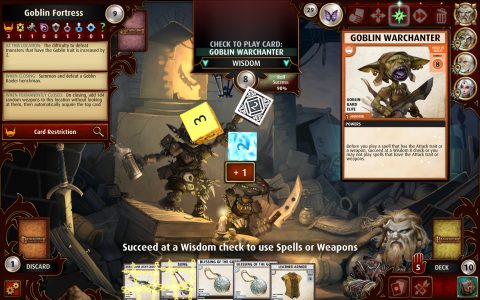
Pathfinder Adventures
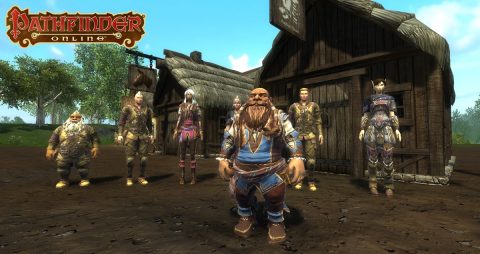
Pathfinder Online
The first of these was Pathfinder: Kingmaker, a loose adaptation of the module of the same name. You play as a mercenary who comes to the River Kingdoms with the promise of earning your own barony from a piece of the Stolen Lands, territory that has been in a state of constant flux for a very long time. You just need to kill a powerful bandit named the Stag Lord to do so. From there, you earn your own territory, expand it, fight to preserve it from a variety of threats, and face down a mysterious force that has caused the Stolen Lands to be stolen for so long.
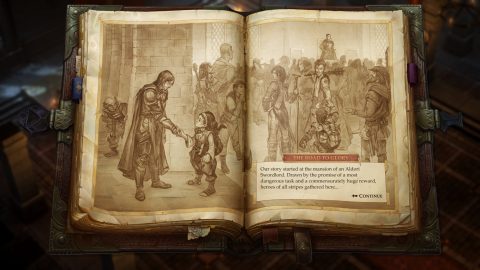
Kingmaker is a low level sort of adventure setting. It places you mainly in the wilderness, most threats amounting to forest beasts and the fey, who can be dangerous but not necessarily evil. Stakes do raise throughout, with the campaign having a large variety of threats from chapter to chapter, but it never gets too serious on a personal level until the end.
The mechanics are a mostly faithful import of the tabletop game, and D&D vets will see a lot of familiar concepts. You have a level cap of 20, and while you have a starting class, you can also branch out into any other class, as long as you meet the moral alignment restrictions (lawful, chaotic, good, evil, neutral, and combos thereof). There are also prestige classes, which streamline certain builds and add extra tricks, like the thief/wizard mix of arcane trickster. These unlock as you meet further requirements, like having certain feats. All non-prestige classes also have variants, usually adding a dash of another class in exchange for an element of the main class.
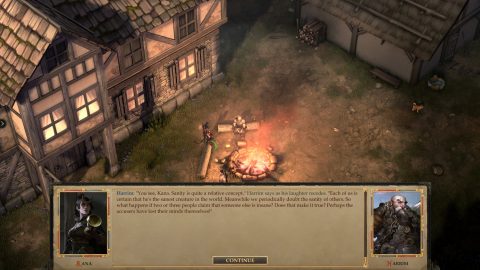
What this leads to is a complex system that rewards forward thinking in making your builds. Some of your companions further push this, as a good lot of them have messy stat dispersion that makes them unable to really spec much into any one role easily. So, you have to get creative, especially if you want to stay on theme. Of course, you can also hire pathfinder mercenaries of your own design as well.
The game plays like most every CRPG, especially the formula D&D games cemented. Things move in real time, you have a pause to cue up actions from your party members, and you can organize a hot bar. What happens is decided by background dice roll RNG, improving yourself pushing the numbers in your favor. There’s also a turn based mode added after the mod scene made their own, if you want a slower but more strategic style of combat.
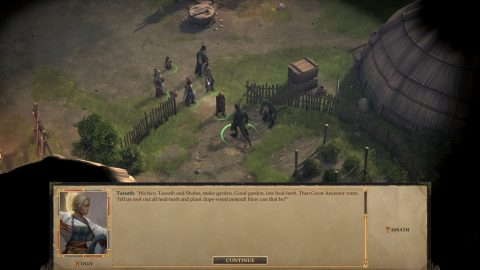
You and your party also have access to skills, which can be improved with skill points, earned via level up. Intelligence and class decides the amount gained, with your stats giving bonus points in certain skills. Classes also decide what skills you get bonuses in, making them more efficient. Through prompt in the play field and during dialog, you can perform a variety of actions – or mess them up, occasionally to hilarious results. Mercifully, you can use your party in most checks, so whoever has the biggest value gets to perform the check and make it more likely you succeed.
That’s all the usual, what with the story events and dungeon crawls, but Kingmaker also has territory management. You have to pick locations for outposts in each new territory you annex, build infrastructure to affect your barony stats, select party members or major NPCs to run aspects of your government, and assign them to problems, opportunities, and projects that run down in the background over a few days. Annexing new territory and ranking up advisors also requires you to sacrifice two weeks, so there’s some scheduling to take into consideration.
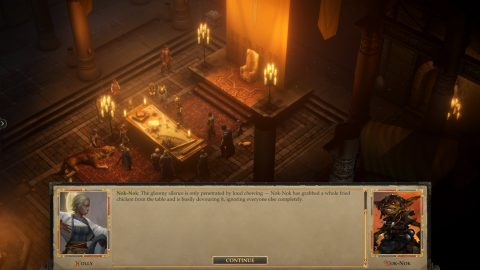
You can also use your own gold to get more build points, which power your projects and buildings. Further, you can earn passive adventure benefits from ranking up your advisors, and also unlock artisans. They’ll make powerful weapons, armor, and items for you, plus bring their own unique quests. With all of this in play, the two modes loop back into one another and encouraging you to do great at both for maximum benefit.
Adding pressure is an ongoing curse through the game that activates after a set number of days, and the major chapter events that require your due attention. Take too long, and both will start doing major damage to your barony’s stats and eventual give you a game over. This creates a weird loop where you’re encouraged to go straight for main story events as soon as they appear instead of prioritizing side stuff out of fear of that being locked off, because not doing the main quests in a timely fashion will create huge problems. The game even takes this into account, with unique events in cases where it takes you awhile to handle the issue.
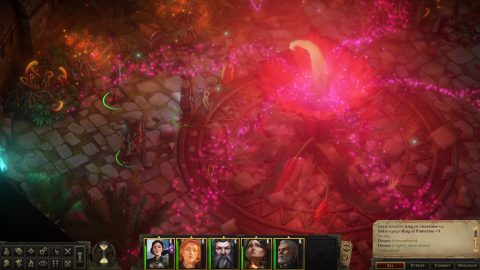
There’s a lot of ambition in Kingmaker, down to making it a fully 3D game. The camera is locked, but the team used the 3D to add detail to environments, and create an entire weather effects system that interacts with the environment. It has a loud and bombastic score, great voice actors among major characters, including Joey from the Blackwell series as know-it-all alchemist gnome Jubilost Narthropple. It has flash and depth, but there’s also a lot of tells that the team was still trying to get a hang of a game of this size.
There are odd technical bugs here and there, like a corpse’s physics freaking out. The tight structure of the campaign means that events can pile on you in frustrating ways if you ever need to backtrack to your capital. This goes especially with chapters four and five being directly back to back. Character quests can unlock too early here if you go too fast, one being urgent alongside chapter five’s starting two quests. There is time to do it all, but the game’s use of invisible timers for near everything obfuscates this and frustrates.
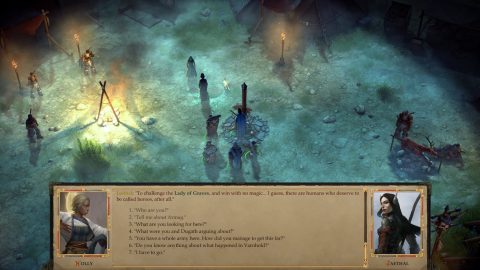
This is made even worse by that ongoing curse, which always becomes active a few days before the journal says it’s supposed to (14 days before) and starts damaging your barony stats. Speaking of which, some areas or journal entries don’t quite point you to where you need to be at times, resulting in confusion in a game structure where not knowing something at the time feels like a failure that can lead to a huge disaster.
The writing is also a bit on the mixed side. Nothing is quite bad, and there are quite a few fun highlights, but not everything clicks. Most companions have simplistic arcs dragged out too long, while the episodic structure makes major events feel disconnected, despite the game making it clear there’s manipulators behind the scenes. It’s a good tour of tabletop fantasy goodness, including undead cyclopes and funny talking kobolds, and occasionally ties in companion arcs, but it does make the core villains feel under used.
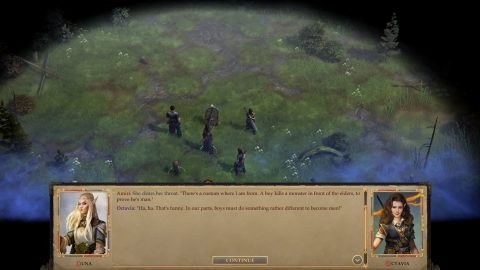
The romances are surprisingly lacking, poorly laid out through the adventure and few in number. They also require you to bring along your chosen other for most of the game, as affection is mostly built in events they have to be present for during quests. It’s also very disappointing if you’re gay, as the two bi options, Octavia and Regongar, are together and in an open relationship. If you don’t make it a three way relationship and only go for one, the one you did not romance dies towards the end of the game. That’s not great, and while we’re at it, neither is the area that happens, infamous among players as one of the most grueling dungeons ever designed in a modern CRPG.
The last bit of the writing issues is actually your alignment dialog choices. The system in play here gives you a series of very specific dialog options, like lawful good or chaotic neutral. This is a problem if you’re trying to stick to one particular alignment because you often get very few dialog choices and have to settle with choices very much out of your alignment. This becomes an issue if you’re using a class with alignment restrictions, meaning your levels may be useless if you go from chaotic neutral to chaotic good, or lawful good to neutral good.
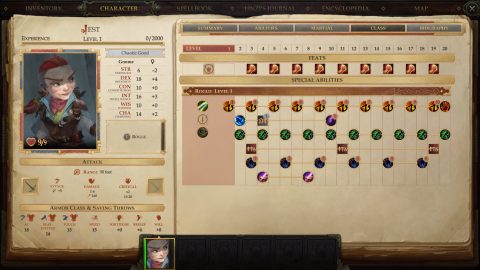
The game is also not the most beginner friendly, though there were attempts to fix that. Taking notes from Pillars of Eternity, Kingmaker has even more robust difficulty customization, alongside info pop ups for remembering characters, places, and gameplay mechanics. Still, it isn’t quite enough for the sheer volume of systems in place, and difficulty spikes are still pretty frequent even on extremely easy difficulty toggles. Just know if you are not that familiar with tabletop systems, you may need to do some extra reading.
Doesn’t help that there’s a good few specialized encounters early on, like mages that spam fear spells, and swarms of spiders that were hated so much that the devs made the quest they appear in structured so you never have to fight them, unless going for extra treasure. Even then, the game now gives you alchemist fire bombs that you can toss to deal with them, because most of what you can do otherwise won’t work on swarms. Don’t worry, there’s still a dozen areas in the first chapter that will completely destroy you if you’re under level five, but at least flavor text gives you a heads up.
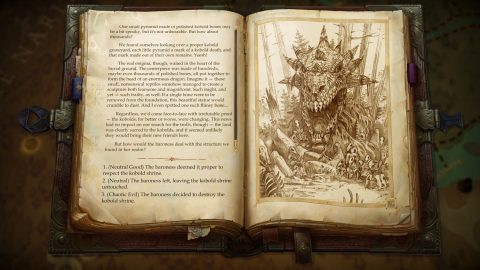
It also does feel like the devs designed certain moments with a certain type of character in mind. Mainly, that you should not be a pure spellcaster or you will be miserable whenever the game forces you into a one-on-one melee fight. The writers often fall into this trap of designing special encounters with specific builds in mind your characters may not have, while the designers are aiming for a more open experience overall. They even included the options to send away most companions and hire the aforementioned pathfinder mercs you get to customize (though they make poor advisers).
The DLC is also fairly mixed. Beneath the Stolen Lands adds a new dungeon, but little of narrative interest. The real draw is the roguelike mode you can use to test builds. Varnhold’s Lot is a short contained side story that has some solid writing and encounters, but suffers from a flabby tail end with an obnoxious dungeon laid out with annoying events that mostly serve to run time out on your buffs.
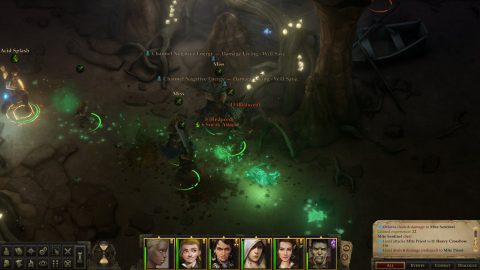
The Wildcards is the one must get, adding two new companions in the form of sisters that trade places via god deals and dimension curses. Both are bi love interests, and have a route where you can romance both, one that does not require you have them in your party constantly. They get their own quest line, kingdom bonuses, and you also get access to the powerful kineticist class. Think a mage that focuses on one element who gets their power from their constitution stat. It’s tricky to learn but a blast to put in practice. It even adds tieflings to your race options. Just be warned the quest chain for the sisters can be messed up due to the weird timing mechanics of chapters four and five, so don’t take your time there.
Kingmaker is a bit tricky to recommend. There’s a lot to love about this game, and the ambition is extremely impressive with how often it gets met, but it can be a frustrating mess. The invisible timers don’t always work the way you’d expect for some parts of it, which can create massive headaches as several quests pile up for your attention, and with the knowledge that it’s very easy to fail one by taking too long, the amount of time at your disposal often completely obfuscated. While patches have helped iron out a lot of wrinkles, it’s very clear there was an issue between the designers and writers having different ideas for how the adventure should flow, and those views never melding properly.
It is a game worth experiencing, despite all that, but you may be better off just jumping into Owlcat’s second attempt, where the team applied all they learned from Kingmaker and then some.
